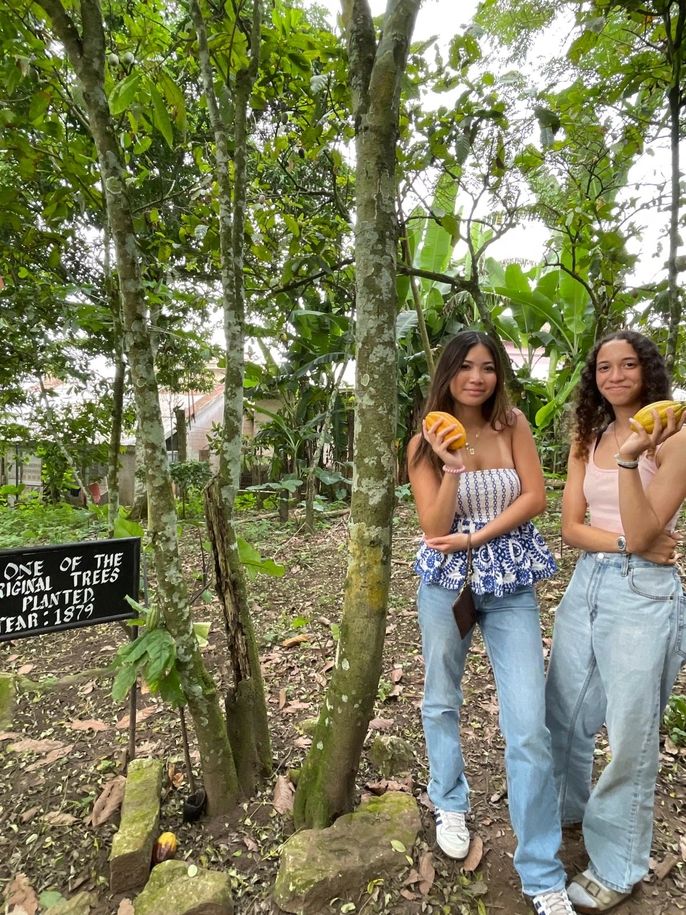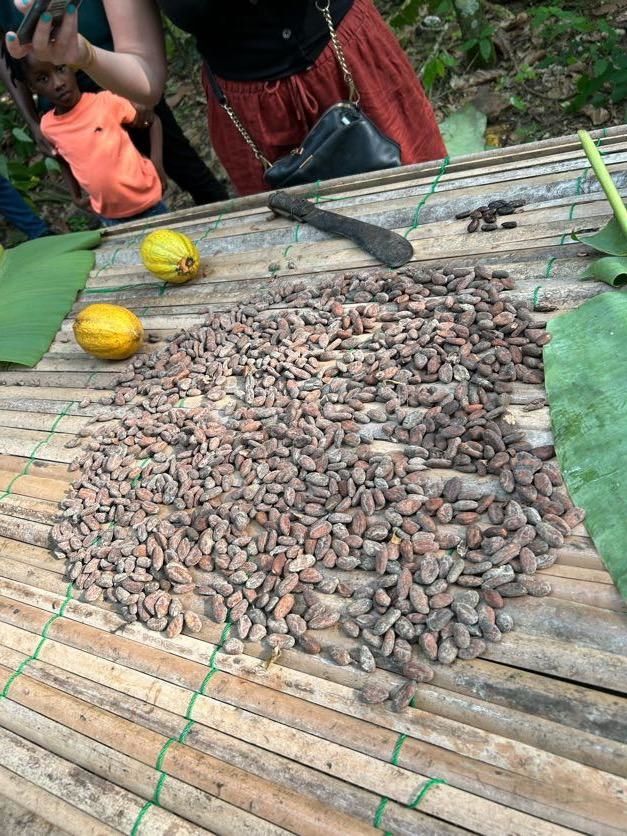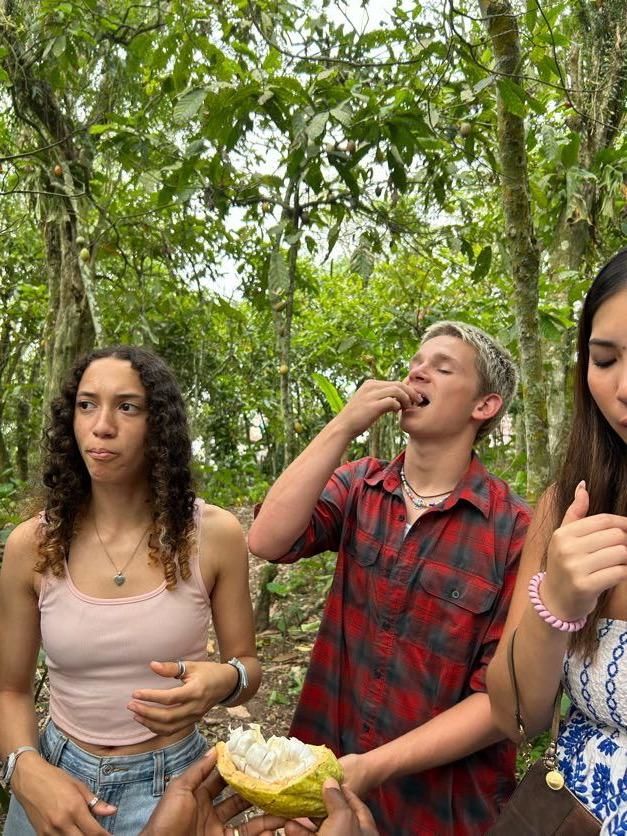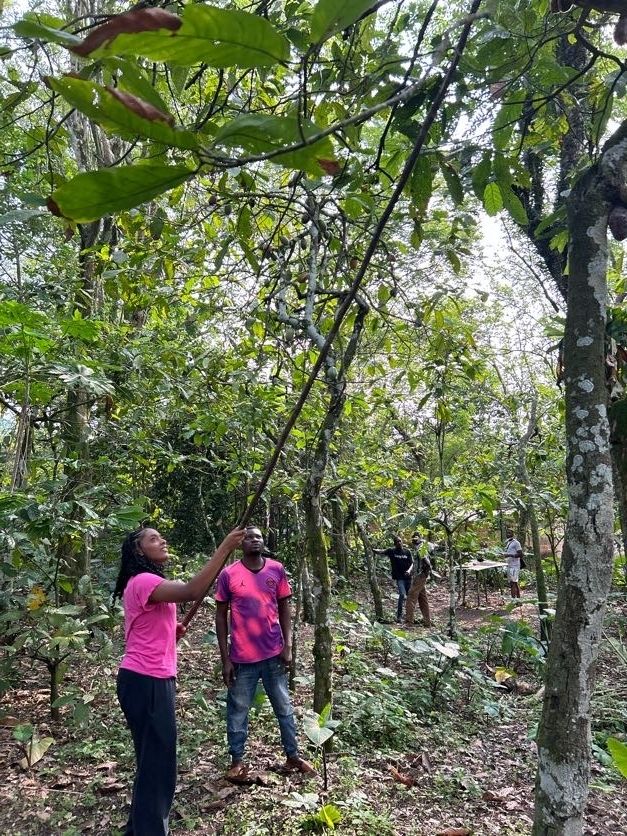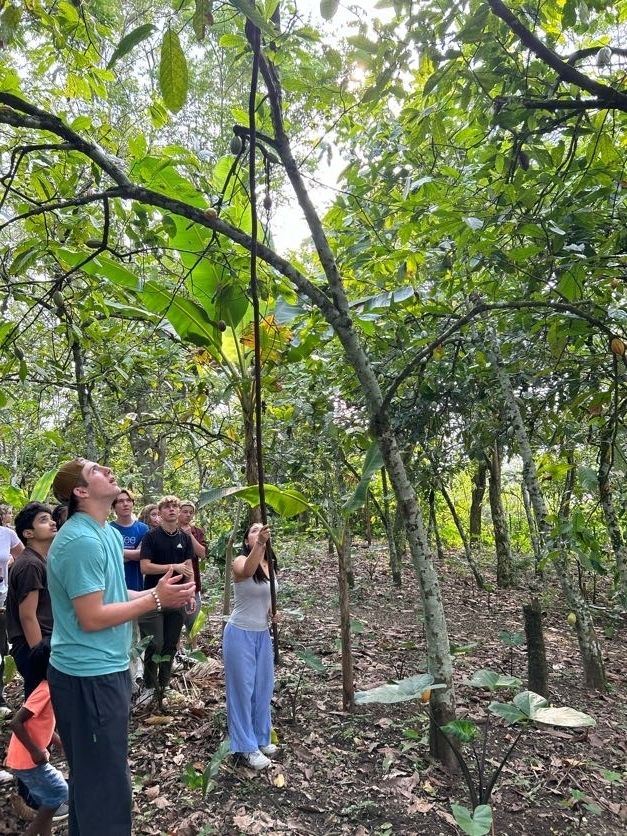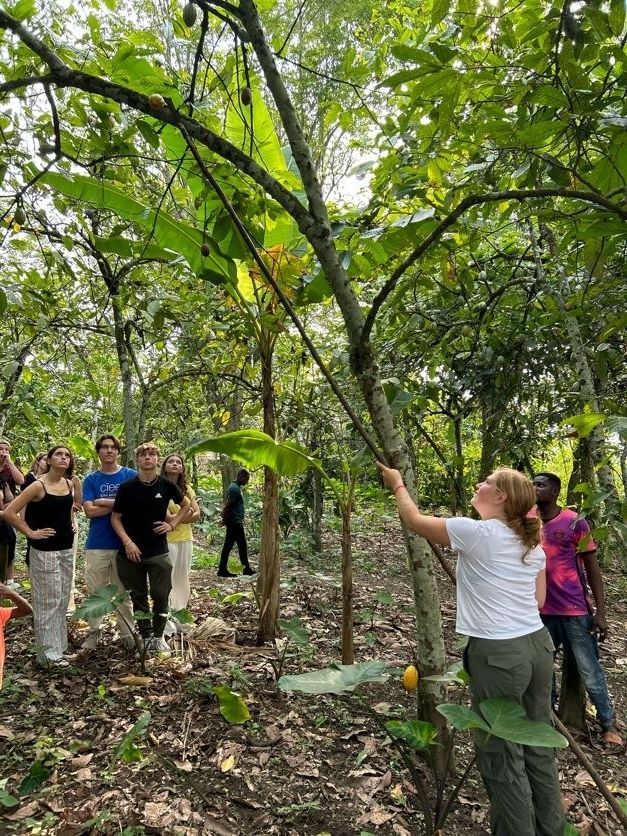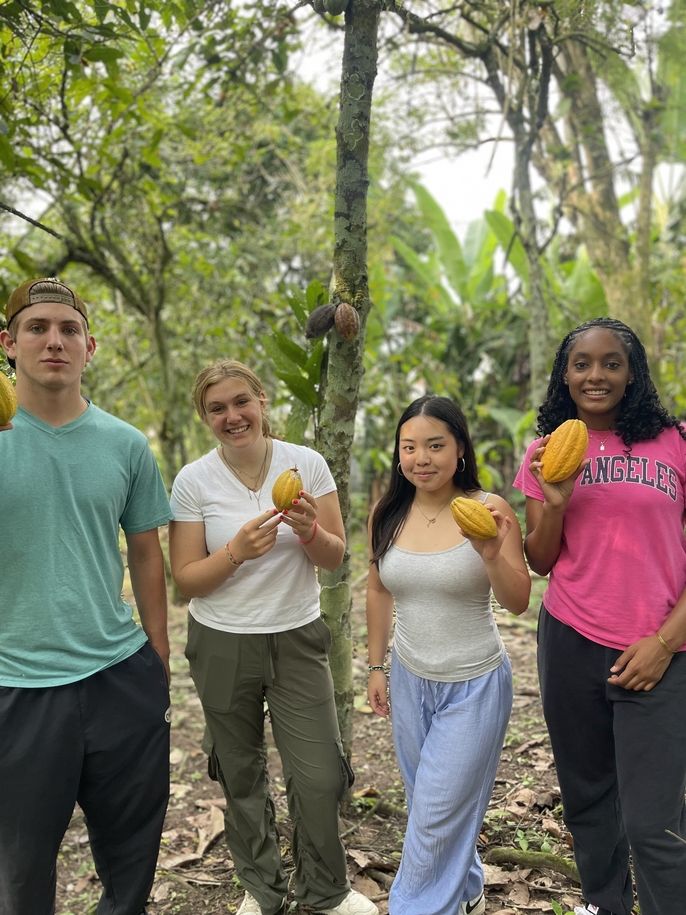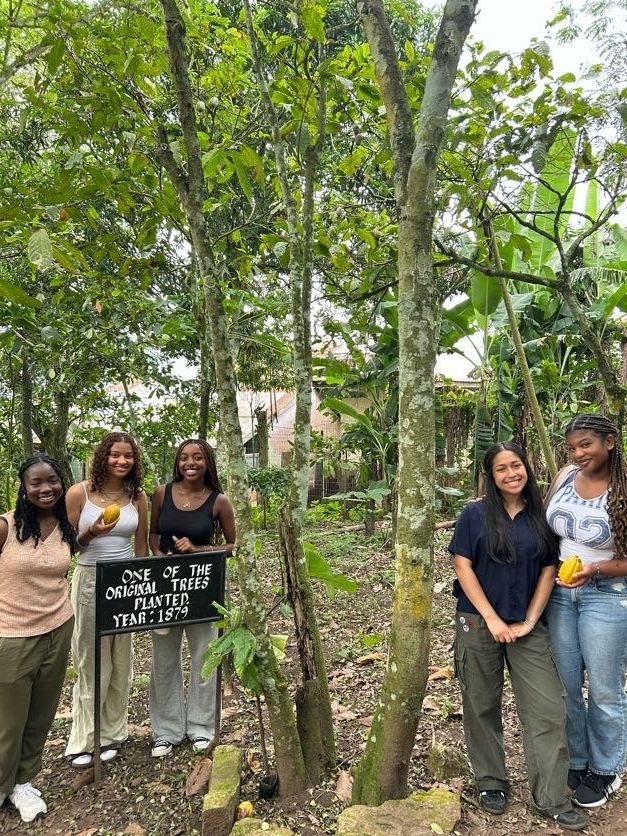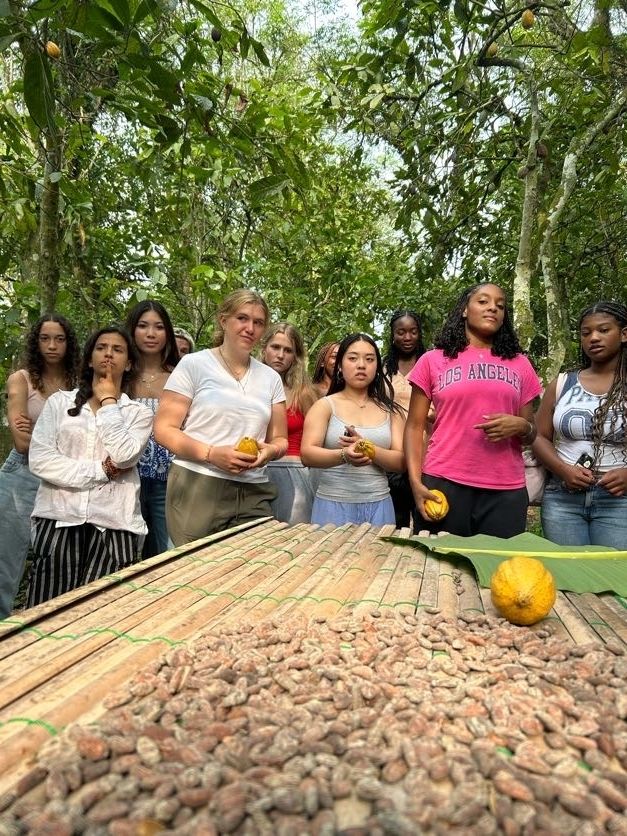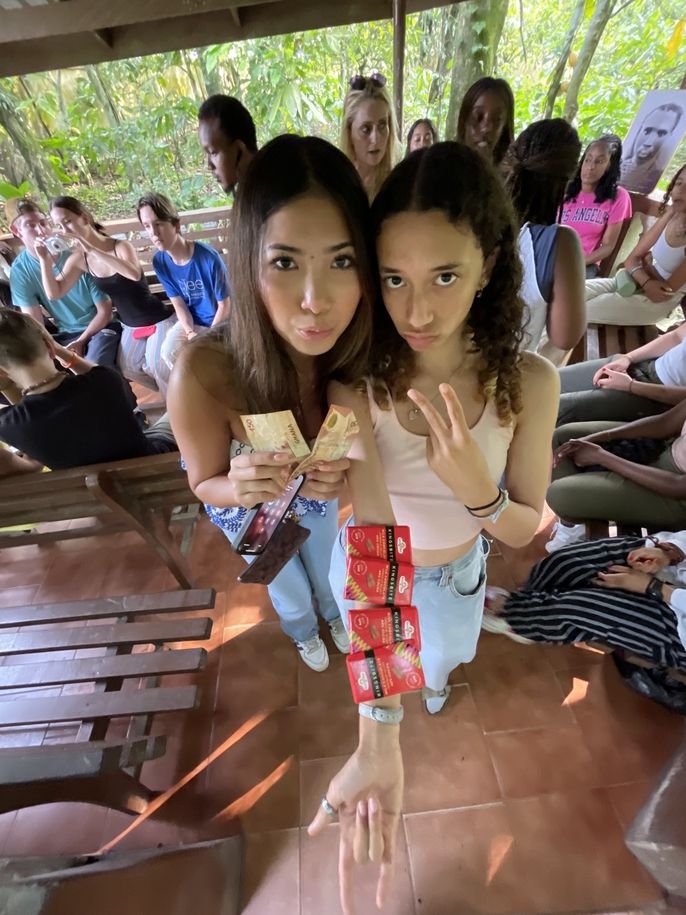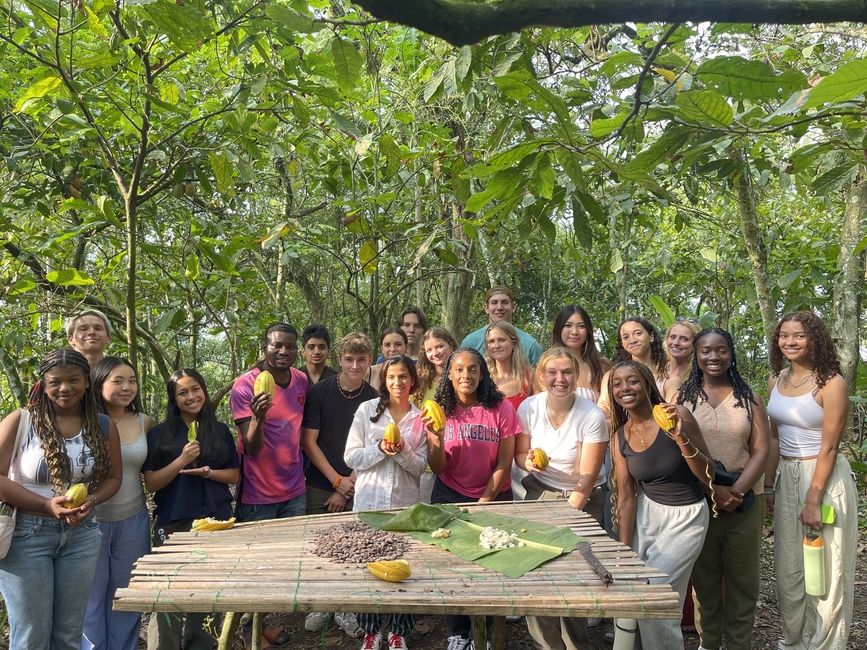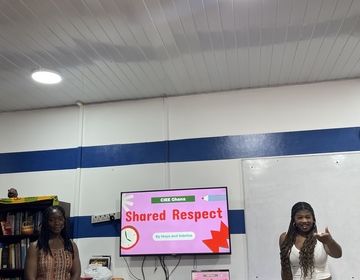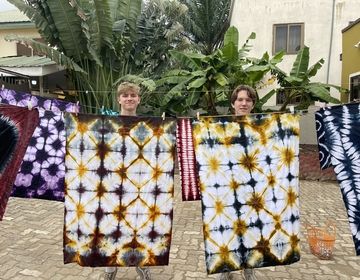Visiting Ghana’s First Cocoa Farm
STUDENT BLOG TAKEOVER!
Milo and Anthea share their experience visiting Ghana's first Cocoa Farm
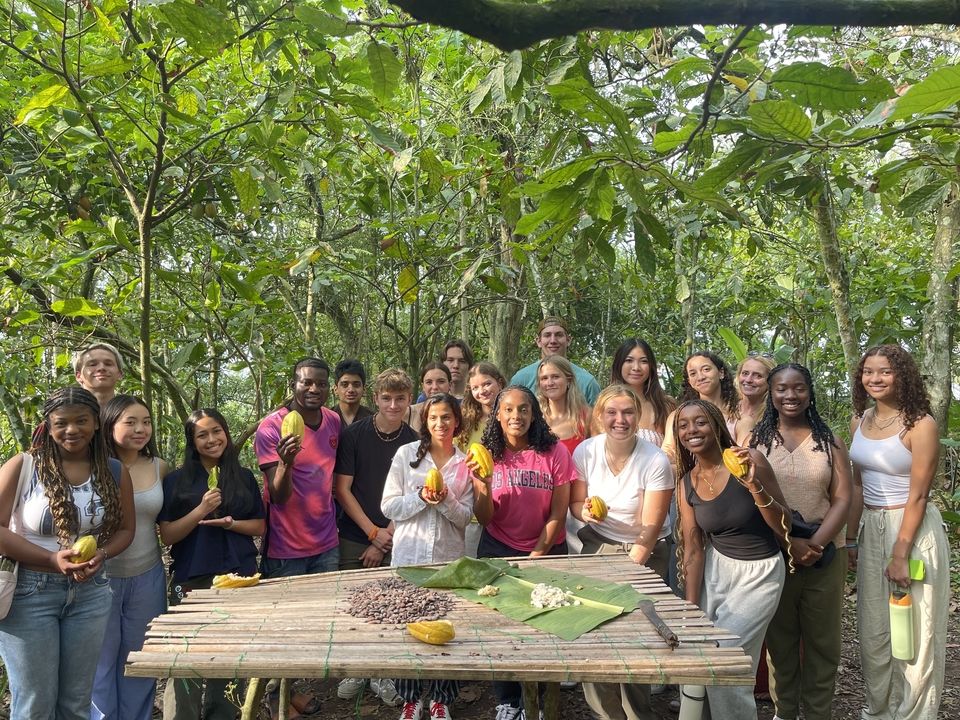
Did you know that chocolate makes up 30-40% of Ghana's GDP? This is because of the hundreds of thousands of small scale family farmers that own and manage cocao farms.
Upon arrival at Tetteh Quarshire Cocoa Farm, we were greeted with customary Ghanaian hospitality (Akwaaba!) and a detailed presentation about the founder and namesake of the first cocao farm in Ghana, Tetteh Quarshie. Quarshie discovered the joys of chocolate while visiting Equatorial Guinea in the late 1800's. Because it was illegal to take or bring plants or seeds from a foreign country, in 1895, he smuggled 6 cocao pods at the bottom of his blacksmithing bag. There was once a myth that he swallowed the pods and kept them until he got to Ghana, but as it was a 6 week journey, this myth was proven impossible, though still a popular legend.
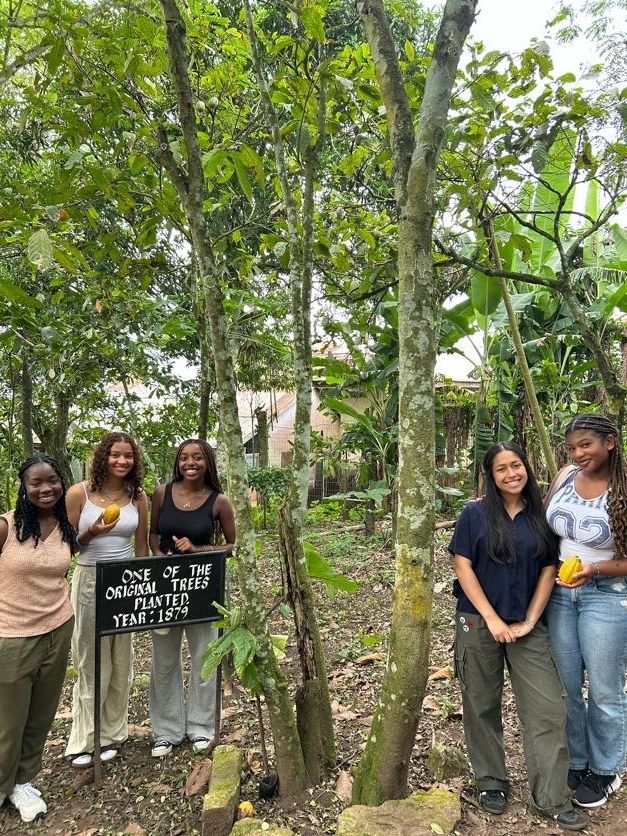
The Cocao fruit is very special because it can only be grown 20 degrees north and south of the equator. When Tetteh brought the pods back, he quickly realized that the pods can only be grown inland because of the salty nature of the soil near the ocean.
When we arrived at the cocoa plantation, we were shocked to find out that it was only one acre, filled with cocao trees along with other supplementary plants: such as plantain, avocado, and banana trees. As we walked down a windy stone path, we were shown and were even able to taste cocao beans at different points in their life cycle, from the seed stage, to fermentation.
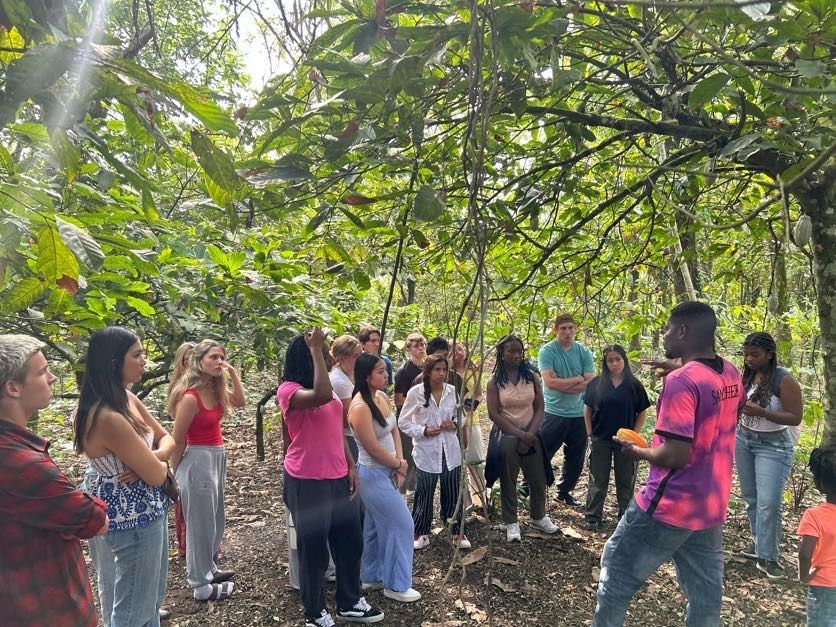
Firstly, the cocao beans are grown on small trees, and take about 6 years to reach maturity. At that point they can be harvested 3 times a year, from June to December. There are different varieties of cocao trees that have different advantages. Hybrid and amazon trees have a gestational length of 2-3 years instead of 6, but they can’t grow past 30 years, which means they produce more fruit in a smaller amount of time. Unlike the amelonado trees, which have a longer life span, but take longer to produce their fruit.
Our guide then demonstrated how to harvest the fruits from the tree. Using an ancient method still used today, he hooked a long
wooden pole with a curved metal end to cut the stem off the fruit. After demonstrating, several participants from our group were able to try it out as well!
When unripened, the fruit is green, and once it reaches a yellow color it is ready to be harvested. When the yellow outer shell is cut open, you see what looks like huge white corn on the cob. Each of the yellow pods can contain 50-60 white cocao beans, and when the individual beans are split open they are purple and bitter.
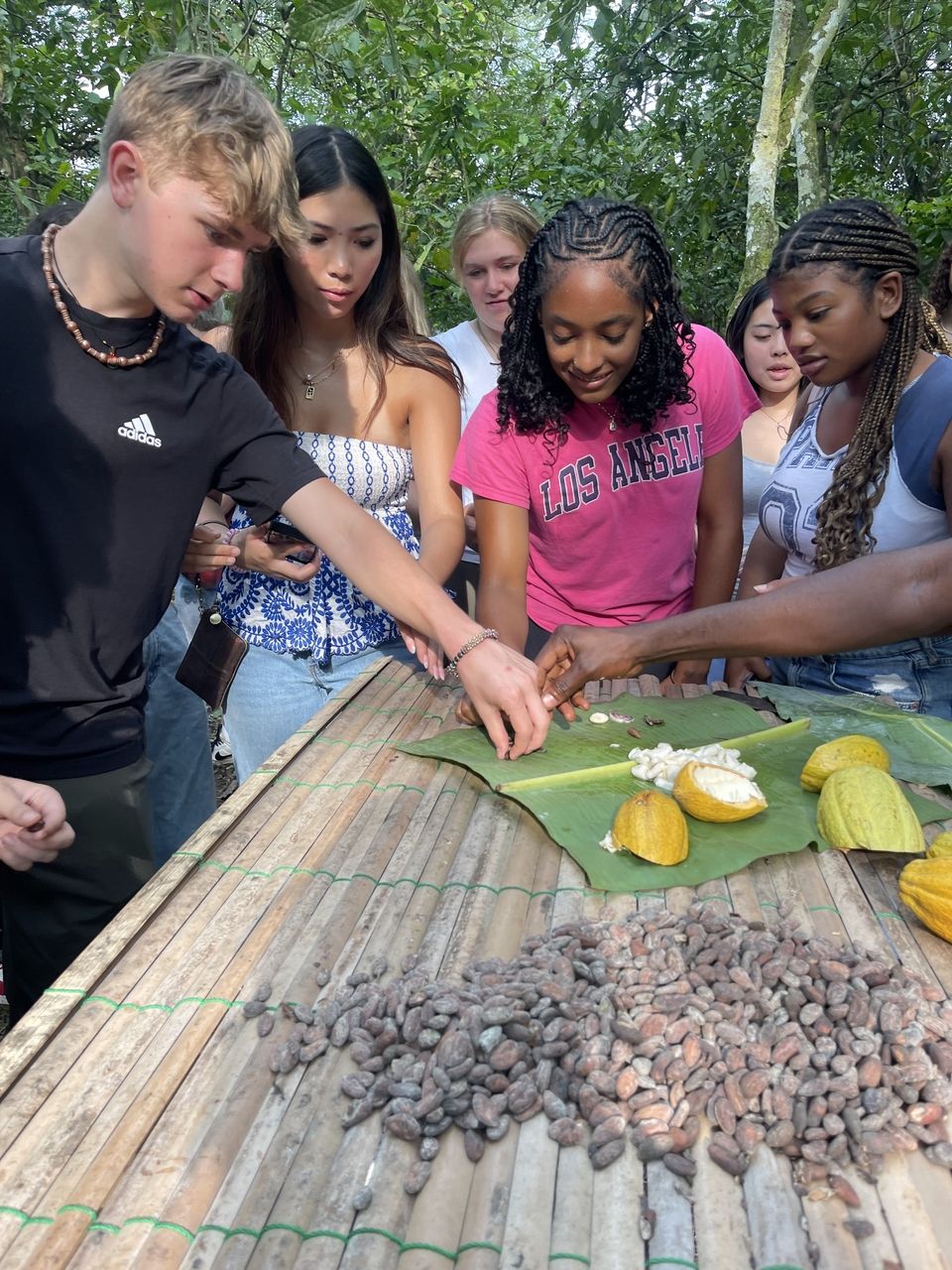
The sweet white coating tastes like a mix of mango, marshmallows, and sweet apple. They were slimy, so it was a unique experience for all of us, but after the initial taste, we all went back for more.
After the initial plucking of the beans they are put under a plantain leaf and the borders are sealed with rocks and sticks. Then, the beans are left for a week, and after that, the farmers uncover the beans to be mixed so that each bean can have an equal fermentation. Finally, after fermentation, they are put out in the sun to dry for one to two weeks. The guide gave us a taste of the now dark brown beans, which tasted like pure dark chocolate with hints of dirt. After the beans are dried they are packaged and sent off to a processing factory which is where the chocolate that we all know and love is created.
Overall, this experience really deepened our understanding of the relationship between culture and food. Learning about the humble origins of cocao in Ghana made us all more appreciative of the process of making chocolate, and also of the family farmers who work hard to bring us one of our favorite snacks.
About the Authors
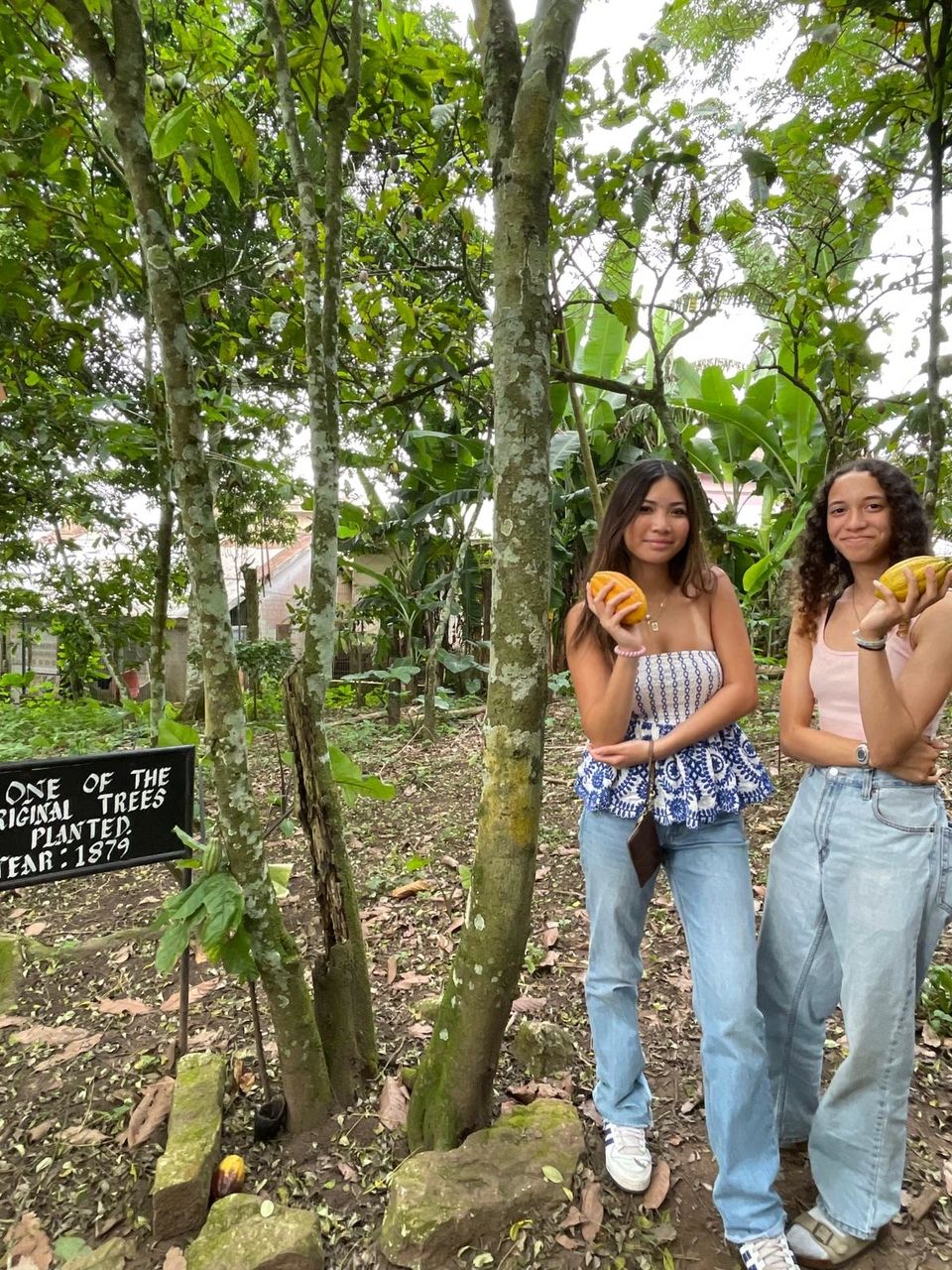
Author: Mylo Carter
School: Pittsburgh Allderdice
Hometown: Pittsburgh, PA
Favorite type of chocolate: Milk chocolate
Author: Anthea Chan
School: Brookline High School
Hometown: San Francisco, CA
Favorite type of chocolate: Ferrero Rochet
Related Posts
Student Project: Shared Respect
During this program, the participants worked in groups to create projects reflecting their experiential learning from the last three weeks. The following is a selection from Sabrina Addo and Maya... keep reading
Tying Up Loose Ends
With only a few days left in our program, we are embracing every opportunity to make lasting memories and reflect on our incredible journey. One of the highlights of this... keep reading
Coconuts, Kubes and the Scientific Method
Student blog takeover: using the scientific method in our cultural explorations.
